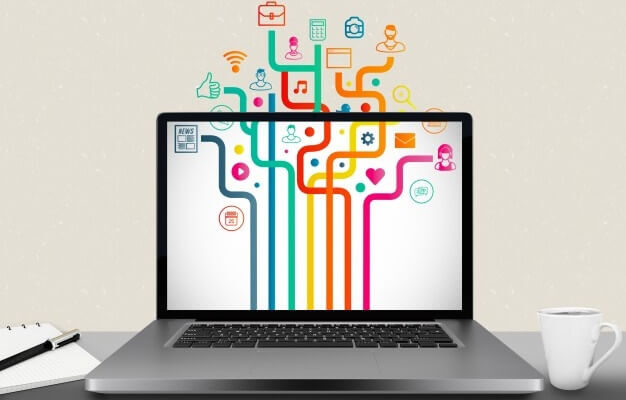By using an A.I.-powered tech tool, you can re-target shoppers at just the right time to avoid having them forget about you or buying from a competitor. The value of a site visitor declines the longer they’ve been away from your site, so you can save a lot on ad spend by layering your retargeting as their value declines. You can also shorten your retargeting period to 7-14 days so that you’re engaging customers when they’re most likely to still convert. Even if a visitor leaves your site, there are ways to get their attention back through retargeting on social media. In order to make this approach successful, you have to choose your timing wisely.
To test this segment, users are classified based on their buying behavior and the products they view online. With this classification, an A/B test can be set up for one of the segments. Many things can be personalized, like which channels to target for which users, in what order, in what timeframe, with what content, which products, etc. If your customers are signed into their accounts, showing “Recently Viewed” products is a great way to leverage customer data to enhance their experience. Not only does this allow customers to easily find products that match their interests, but it acts as a reminder for these customers, increasing their purchase frequency.
With the dominant use of mobile devices, device based personalization is a fast-growing ecommerce trend. UTM parameters help to define and segment traffic by referral sources, campaign name and content type. Landing pages can be personalized by any or a combination of these three parameters. By serving different content to visitors coming from different sources, you can increase the relevance of your messaging and motivate buyers through their buyer’s journey. The ability to serve tailored content to an otherwise anonymous segment of users is the first step in personalization.
It’s almost unfair to e-commerce brands as the consumers implicitly assume the experience to be tailored, but they might not be as friendly in sharing their information. And this is where some of the newer technologies, such as AI, may be handy, which can forecast the remaining dataset based on the partial data available. It could help provide the personalized experience and recommendations without threatening forms that ask for personalized information that some users may perceive as alarming. His core strengths lies in growing revenue by developing and executing scalable customer acquisition and search marketing strategies for online retailers. He blogs, runs webinars and teach courses about ecommerce growth on2XeCommerce.com. He also hosts anecommerce podcastdedicated to growing and scaling online retail businesses.
When mailing a customer database, the system that generates the best products to recommend needs to be able to adjust to the data available for each customer. It needs to manage what personalization data is available and use the best strategy for generating a sale. When no data is available, the system needs to default to merchandising strategy options.
From your Facebook business page, shoppers can start an automated conversation with the chatbot to ask common questions, buy a product, and more. While any brand can set up a product quiz, it’s best for companies with many similar products. The quiz will help shoppers find the version that best does what they need it to do. Encourage them to browse your store by highlighting frequently searched categories and products in your search bar. Nielsen reports that nearly a quarter of shoppers will be likely to click a suggestion.
In this section we look at where personalization is best deployed in the customer journey and some tips about how best to present products and content. The use of search, pay-per-click ads and social media means that typically customers are entering websites on category, product and editorial pages. The mix of personalization data available will also vary from visitor to visitor. Contrast a visitor who has visited a site ten times in the last week with a returning visitor who last visited the site over a year ago.
Start With Adding Personalized Recommendations
In this hypothetical case, we’ll tackle a common user experience problem on big ecommerce sites—the findability of products. Let’s take a fictitious company, “The Garden Company,” which sells garden equipment ranging from a shovel to a lounge set. Combining the what with the why in this way helps shape a personalized ecommerce marketing campaign that not only targets customers where they’re active, but ensures your messaging doesn’t fall on deaf ears. Gen Zers are most likely to discover brands via online ads, and they research them via social media. This confirms a paid social media campaign would be effective for raising awareness. Promotional offers can also be segmented based on consumer behavior, for example, new, loyal, or dormant customers to help incentivize or remind them to re-engage with your brand at various touch points.
What is ubiquity in eCommerce?
In general, the term “Ubiquity” means being physically present in several places simultaneously or being omnipresent. In eCommerce and customer service, Ubiquity refers to the fact that your visitors/ customers can access a service from any place, on any device, anytime.
The personalized shopping strategy you employ will typically depend on the size of your customer base, the volume of sales your store generates and also the tools you use to deploy personalization. Information from every touchpoint along the customer journey must be made available to create a single source of truth from which to take instant action. You might think that these bots can’t offer the friendly, personal customer service of a rep, but advanced technology has made them sound pretty conversational. More importantly, they’re able to give shoppers useful guidance and recommendations by pulling from browsing and purchase data. To drive the strategies that deliver the most relevant product recommendations, for example, Episerver Perform uses over 100 algorithms that help determine what a visitor will be most likely to purchase. The homepage, however, is the place where loyal shoppers are likely to enter.
Integrate Rfm Scoring Into Your Shopping Cart Abandonment Strategy
This makes it easier to see how brands are incorporating personalization in both inbound and outbound strategies. Depending on the nature of the business and its model, certain personalization processes may be more effective than others. What’s more, users increasingly expect content they’re exposed to to relate to their interests and life stages across multiple channels. We’ve seen this from the likes of Amazon and Netflix to smaller retailers like Fab and Campus Protein. Research suggests users respond best to content that speaks directly to them.
Traffic from Amazon ads might have more intent than traffic from Facebook, so customizing landing pages by adding 1-time coupon codes or free next day shipping might tip the balance for conversions. As an etailer, endeavor to avoid making generalizations on the intent of site visitors and traffic, as all traffic is in fact not equal. The holy grail of retail business longevity is growing and keeping a loyal customer base. Overall, eCommerce personalization is simply the only way to stay competitive in today’s fast-paced eCommerce environment, and luckily, it is always possible to start small.
What Is Ecommerce Personalization?
After all, they’ve bought from you before, so you have no excuse for not knowing their preferences and interests! Personalizing your communications based on past purchases can be a powerful way to drive upsells and cross-sells. Product recommendations for “People Also Viewed” or “People Also Bought” can be an opportunity to provide valuable recommendations. Even anonymously, you’re providing maximum value to visitors by suggesting products based on their interests.
In all cases, it is the combination and configuration of all the strategies working together that produces the best results. Episerver’s personalization engine, for example, may identify ten products that meet the strategies selected in any one instance. However, Episerver’s personalization engine begins working immediately to understand the intent in the current shopping session and serve products accordingly. Here we look at some of the different strategies used on generic homepages, while recognizing that there can be many variations depending on the behavior data profile of each site. All these devices need to be accurately identified as being related to an individual customer.
It has been intentionally placed at checkout to retrieve abandoned shopping and further email marketing. When browsing in the UK, content related to ‘international express shipping’ and ‘international bestsellers’ is displayed. Although humans are able to make personal recommendations, it really is challenging at scale with hundreds or thousands of SKUs and thousands or even millions of customers. AI is quickly shaping personalization in ecommerce and should be the core technology driving your personalization efforts. Signed in visitors are also made to feel at home with personalized messages addressing them by first name on the home page.
This provides users with the necessary information and allows them to choose a size and add it to the basket without leaving the page. If the retailer can only serve four products on a given page, it will choose those products with the highest propensity for purchase. If the customer doesn’t click on what has been served, products with a higher propensity score will be shown the next time the page is visited.
- Shoppers today place a high value on “smart” product recommendations—suggestions for new items based on what customers with similar interests have ordered.
- The onsite search capability within the Episerver platform incorporates behavioral data.
- And an increasingly important aspect of e-commerce success is e-commerce personalization.
- To determine the discount segments, a percentage discount can be picked for the segments, or a set of bins could be used.
Even when a shopper leaves your store, you can still keep them thinking about your products with personalized ads on other sites. Say, for example, you run an electronics company and want to promote your store’s back-to-school sale on laptops. With Facebook ad targeting, you can set up your promotion to appear only to college-age users. Just like a store clerk recognizes repeat customers, use your shoppers’ names in online communication to build familiarity with them. Personalization can help you build a stronger connection with customers that will ensure their loyalty and engagement.
In addition, the abundance of tools and tech solutions available allows companies to reach a broader target customer pool and provide services better than ever. Thus businesses come up with new ways to boost their performance and enhance customer experience. As you can see from the above-listed e-commerce personalization examples, there are many ways to personalize your e-commerce business. Spotify’s personalization strategy is a win-win for both artists and music lovers. Once RFM segmentation is integrated into your customer list and ecommerce site, it is a relatively simple way of delivering more tailored messaging to your customers based on their past behaviors. Viewed But Did Not Purchase — This is a list of customers that viewed the same product more than once but didn’t purchase.




